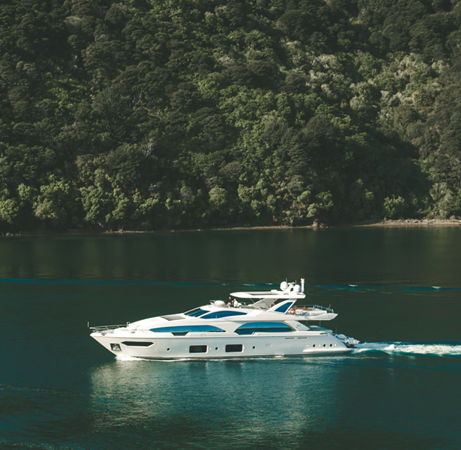Miles vs Nautical Miles: Why Knowing the Difference is Essential for Mariners

As a mariner, navigation is a crucial part of your job. Whether you’re sailing across the ocean or navigating through narrow channels, understanding distances and measurements is essential. One common challenge that many mariners face is knowing the difference between miles and nautical miles. While these terms may seem interchangeable to some people, they have significant differences that can impact your journey. In this blog post, we’ll dive into what makes each type of measurement unique and why it’s vital for mariners to know the difference between them. So grab your compass and get ready to learn!
What are miles?
Miles are a unit of measurement commonly used in everyday life. They’re based on the imperial system of measurement and are typically used to measure distances between cities, towns, and other landmarks. One mile is equivalent to 1.60934 kilometers.
The origin of miles can be traced back to ancient Rome when it was first introduced as “mille passus,” meaning one thousand paces or steps. Over time, this term evolved into “mile” and became an essential part of navigation across the world.
Miles are widely used today for both land-based and air travel. For example, if you’re driving from New York City to Boston, you’ll cover approximately 215 miles along the way. Similarly, if you’re flying from Los Angeles to New York City, your journey will take you roughly 2,475 miles.
While miles may seem like a straightforward form of measurement at first glance, there’s still plenty that mariners need to keep in mind when navigating through unfamiliar waters. In particular, they must ensure that they understand how miles compare with nautical miles – another critical unit of distance for seafarers – before setting sail on any voyage!
What are nautical miles?
Nautical miles are a unit of measurement that mariners use to calculate distances on the water. A nautical mile is defined as one minute of arc along a meridian of the Earth, which means it’s based on the circumference of the Earth rather than a standard land-based measurement.
The length of one nautical mile is equivalent to approximately 1.15 statute miles or 6,076 feet. This difference might seem small but can have significant consequences for marine navigation and safety.
Nautical miles are used in marine charts and maps to plot courses and navigate around obstacles such as rocks, reefs, and shoals. Mariners also use nautical miles when communicating with other vessels or reporting their position to authorities.
Knowing how to convert between nautical miles and other units is crucial for safe navigation at sea. Without this knowledge, mariners risk making errors in navigation that can lead them off course or into dangerous waters.
In short, understanding what nautical miles are and how they differ from regular miles is essential knowledge for anyone involved in marine travel or navigation.
How do they differ?
Miles and nautical miles are both units of measurement, but they differ in their origins and uses. A mile is a unit of distance measurement that has been used for centuries on land, while the nautical mile was developed specifically for use at sea.
One significant difference between these two measurements is the length. A nautical mile is longer than a standard (land) mile. Specifically, one nautical mile equals about 1.15 land miles or 6,076 feet compared to 5,280 feet per land mile.
Another critical difference lies in their usage: miles are used primarily on land and by aviation professionals who fly over land masses whereas mariners rely solely on nautical miles for navigation purposes when sailing across oceans or seas.
Moreover, distances measured in nautical miles take into account the curvature of the Earth’s surface since it isn’t flat like a map; thus calculations with standard measures would lead to significant errors when navigating out at sea.
Understanding these differences can be crucial for mariners as miscalculations can result in disastrous consequences such as collisions or running aground. Therefore every seafarer must possess an accurate understanding of these two types of units before venturing into deep waters
Why is it essential for mariners to know the difference?
For mariners navigating the open sea, understanding the difference between miles and nautical miles is crucial. While both terms refer to measurements of distance, they vary significantly in their applications.
Miles are a standard unit of measurement used on land. They are derived from the Roman mile and equate to 1,760 yards or 5,280 feet. On the other hand, nautical miles are based on the circumference of Earth along its equatorial plane. One nautical mile equals one minute of latitude or around 1.15 statute miles.
For mariners sailing across oceans and seas, using nautical miles instead of regular ones is essential for accurate navigation. This is because longitude lines converge at the poles but run parallel to each other at the equator; this means that distances measured by degrees of longitude shrink as you approach either pole.
Moreover, marine charts use nautical distances exclusively so that sailors can quickly determine where they are about hazards such as rocks or sandbars accurately.
In summary, knowing how far you have traveled over water could mean life or death for sailors navigating vast bodies of water every day. Being able to differentiate between miles and nautical miles ensures accuracy when calculating the distance traveled over water – which ultimately helps keep both crew members and vessels safe while out at sea.
Conclusion
Understanding the difference between miles and nautical miles is crucial for mariners. Although both units of measurement are used to measure distance, they differ in their applications and conversions. While standard miles are primarily used on land for measuring distances between two points, nautical miles are commonly used at sea due to their accuracy in calculating a ship’s speed and position.
As a result, mariners need to have a clear understanding of these two units of measurement when navigating the seas or planning maritime routes. By knowing how to convert between them accurately, sailors can ensure that they stay on course and reach their destinations safely.
So whether you’re an experienced sailor or just starting your journey as a mariner, investing time in studying these measurements will undoubtedly pay off in the long run!






